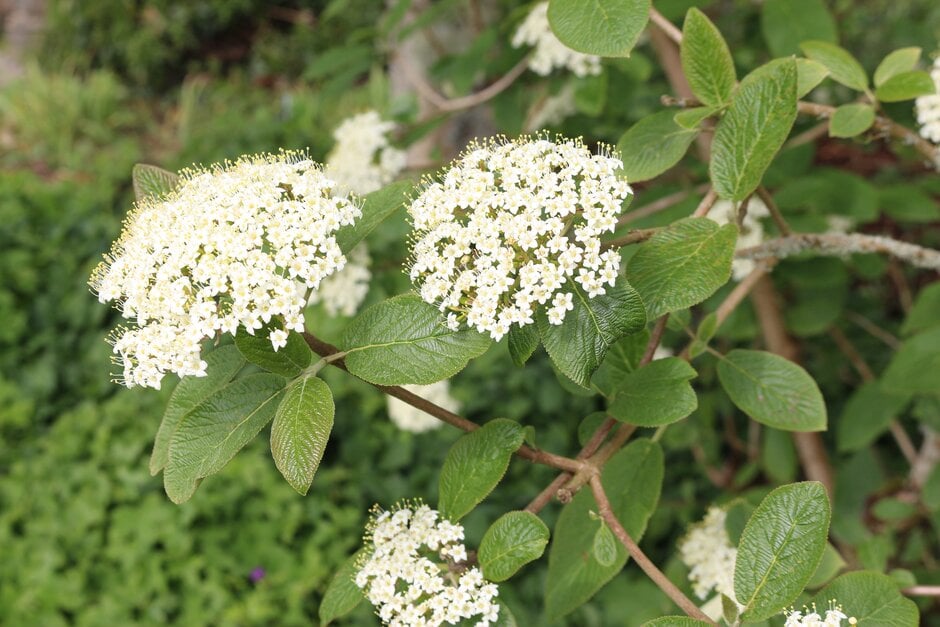Viburnum macrocephalum
Chinese snowball
A large, dense, rounded, semi-evergreen shrub to 4m with shiny, dark green, oval leaves. Produces huge trusses of sterile florets in late spring, opening lime green and maturing to pure white
Size
Ultimate height
2.5–4 metresTime to ultimate height
5–10 yearsUltimate spread
2.5–4 metresGrowing conditions
Moisture
Moist but well–drained, Well–drainedpH
Acid, Alkaline, NeutralColour & scent
| Stem | Flower | Foliage | Fruit | |
| Spring | Green White | Green | ||
|---|---|---|---|---|
| Summer | Green | |||
| Autumn | Green | |||
| Winter | Green |
Position
- Full shade
- Full sun
- Partial shade
Aspect
East–facing or North–facing or South–facing or West–facing
Exposure
Sheltered Hardiness
H5Botanical details
- Family
- Viburnaceae
- Native to GB / Ireland
- No
- Foliage
- Semi evergreen
- Habit
- Bushy
- Potentially harmful
- Fruit are ornamental - not to be eaten. Wear gloves and other protective equipment when handling. Pets: Fruit are ornamental, not to be eaten - see the HTA guide to potentially harmful plants for further information and useful contact numbers
- Genus
Viburnum can be deciduous or evergreen shrubs with opposite, simple or palmately lobed leaves and clusters of small, often fragrant white or pink flowers, followed by red, blue or black berries
- Name status
Correct
- Plant range
- China
How to grow
Cultivation
Grows well in most moderately fertile, humus-rich, well-drained soils in sun or shade
Propagation
Propagate by softwood or semi-hardwood cuttings
Suggested planting locations and garden types
- City and courtyard gardens
- Cottage and informal garden
- Flower borders and beds
- Wall side borders
Pruning
Pests
May be susceptible to aphids, viburnum beetle, viburnum whitefly and viburnum scale
Diseases
May be susceptible to Phytophthora, honey fungus, grey moulds and leaf spot
Love gardening
Sign up to receive regular gardening tips, inspiration, offers and more
View our Privacy Policy
Get involved
The Royal Horticultural Society is the UK’s leading gardening charity. We aim to enrich everyone’s life through plants, and make the UK a greener and more beautiful place.

